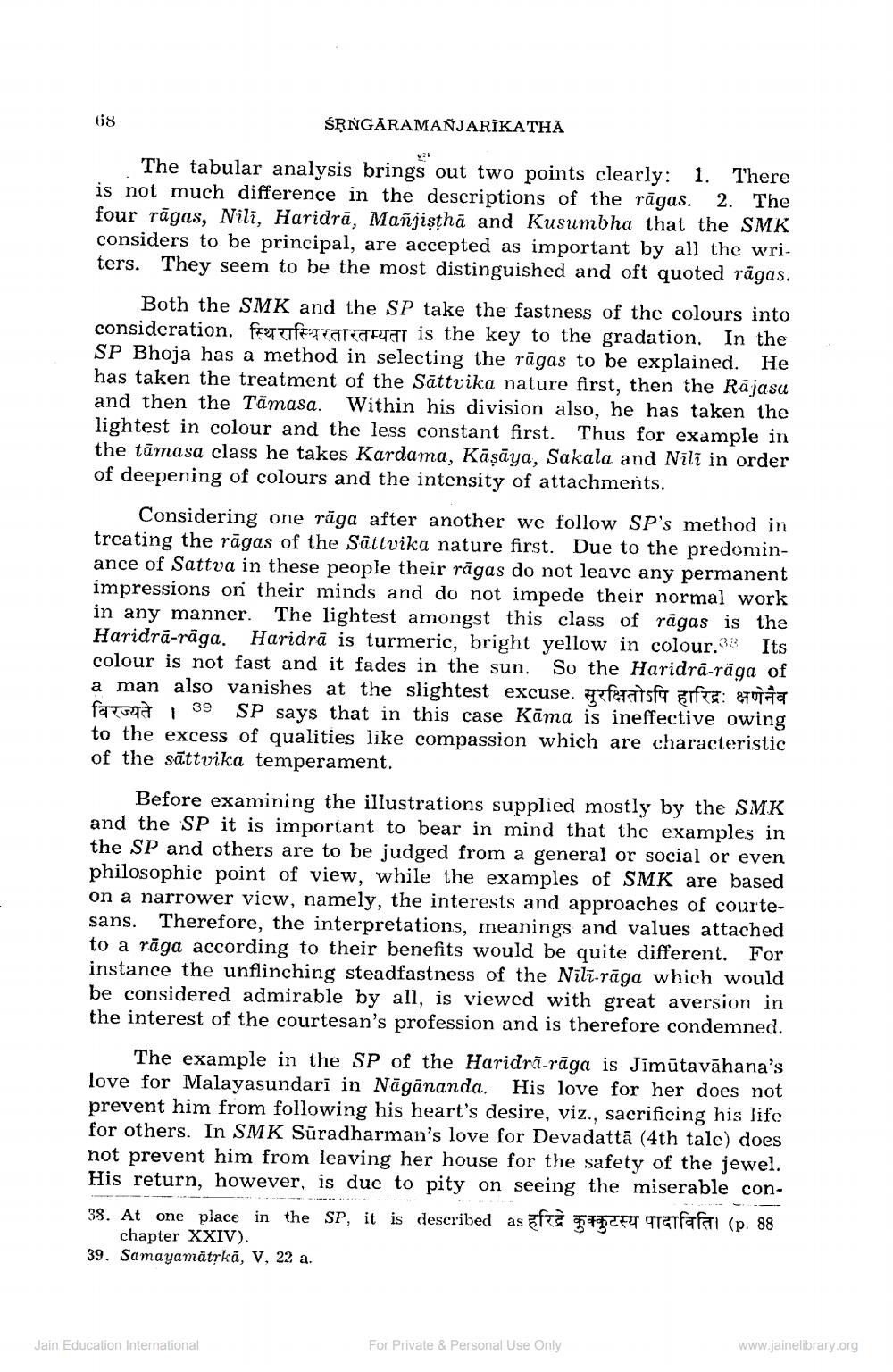________________
68
ŚṚNGARAMANJARIKATHA
vil
The tabular analysis brings out two points clearly: 1. There is not much difference in the descriptions of the rāgas. 2. The four ragas, Nili, Haridra, Mañjiṣṭhā and Kusumbha that the SMK considers to be principal, are accepted as important by all the writers. They seem to be the most distinguished and oft quoted rägas.
Both the SMK and the SP take the fastness of the colours into consideration. ff is the key to the gradation. In the SP Bhoja has a method in selecting the rāgas to be explained. He has taken the treatment of the Sattvika nature first, then the Rajasa and then the Tamasa. Within his division also, he has taken the lightest in colour and the less constant first. Thus for example in the tamasa class he takes Kardama, Kāṣāya, Sakala and Nili in order of deepening of colours and the intensity of attachments.
Considering one raga after another we follow SP's method in treating the rāgas of the Sattvika nature first. Due to the predominance of Sattva in these people their rāgas do not leave any permanent impressions on their minds and do not impede their normal work in any manner. The lightest amongst this class of ragas is the Haridra-raga. Haridra is turmeric, bright yellow in colour.33 Its colour is not fast and it fades in the sun. So the Haridra-räga of a man also vanishes at the slightest excuse. सुरक्षितोऽपि हारिद्रः क्षणेनैव विरज्यते । 39 SP says that in this case Kama is ineffective owing to the excess of qualities like compassion which are characteristic of the sattvika temperament.
Before examining the illustrations supplied mostly by the SMK and the SP it is important to bear in mind that the examples in the SP and others are to be judged from a general or social or even philosophic point of view, while the examples of SMK are based on a narrower view, namely, the interests and approaches of courtesans. Therefore, the interpretations, meanings and values attached to a raga according to their benefits would be quite different. For instance the unflinching steadfastness of the Nili-raga which would be considered admirable by all, is viewed with great aversion in the interest of the courtesan's profession and is therefore condemned.
Jain Education International
The example in the SP of the Haridra-rāga is Jimūtavāhana's love for Malayasundari in Nāgānanda. His love for her does not prevent him from following his heart's desire, viz., sacrificing his life for others. In SMK Suradharman's love for Devadatta (4th tale) does not prevent him from leaving her house for the safety of the jewel. His return, however, is due to pity on seeing the miserable con38. At one place in the SP, it is described as s हरिद्रे कुक्कुटस्य पादाविति । (p. 88
chapter XXIV).
39. Samayamātṛkā, V, 22 a.
For Private & Personal Use Only
www.jainelibrary.org




